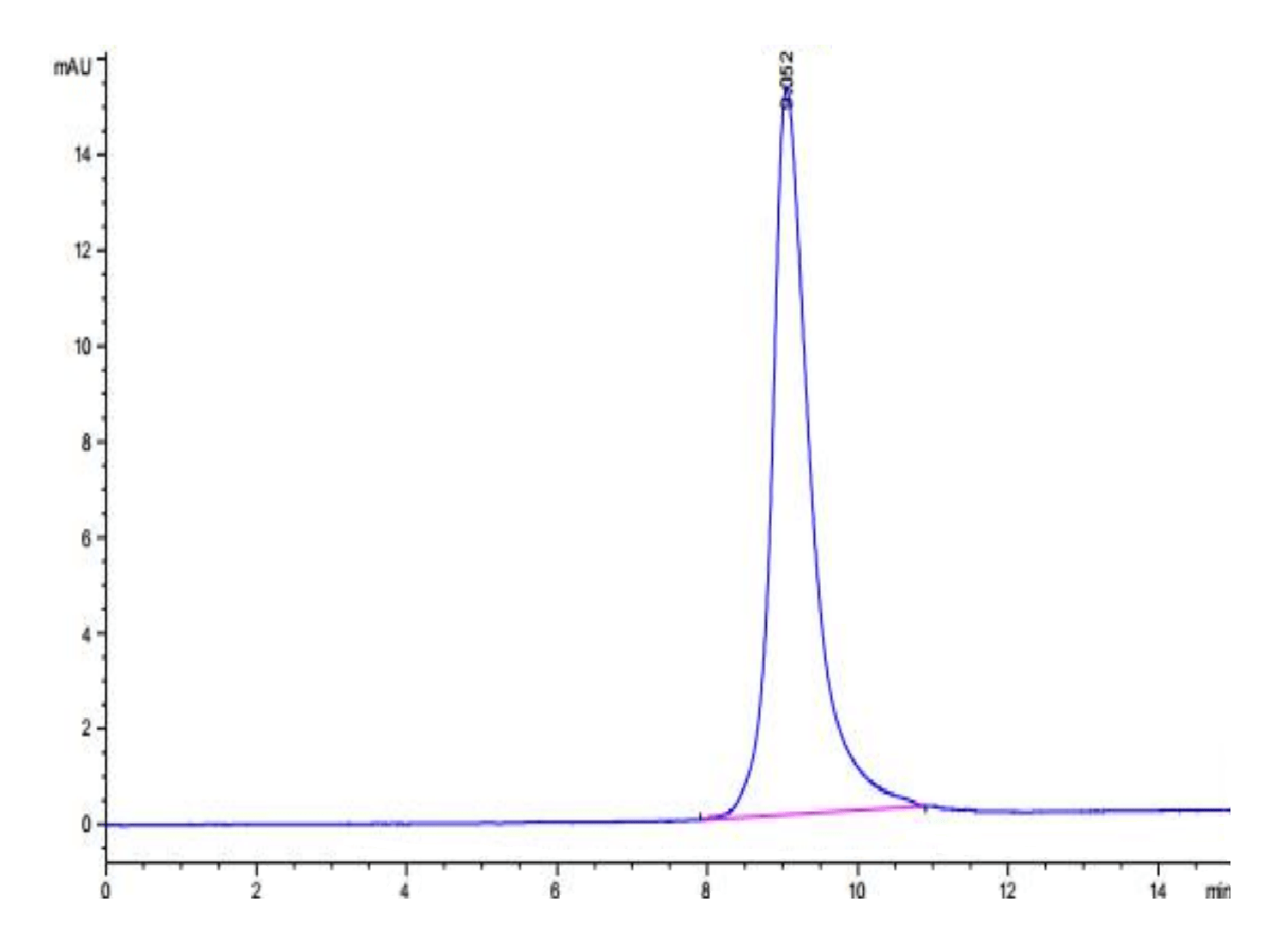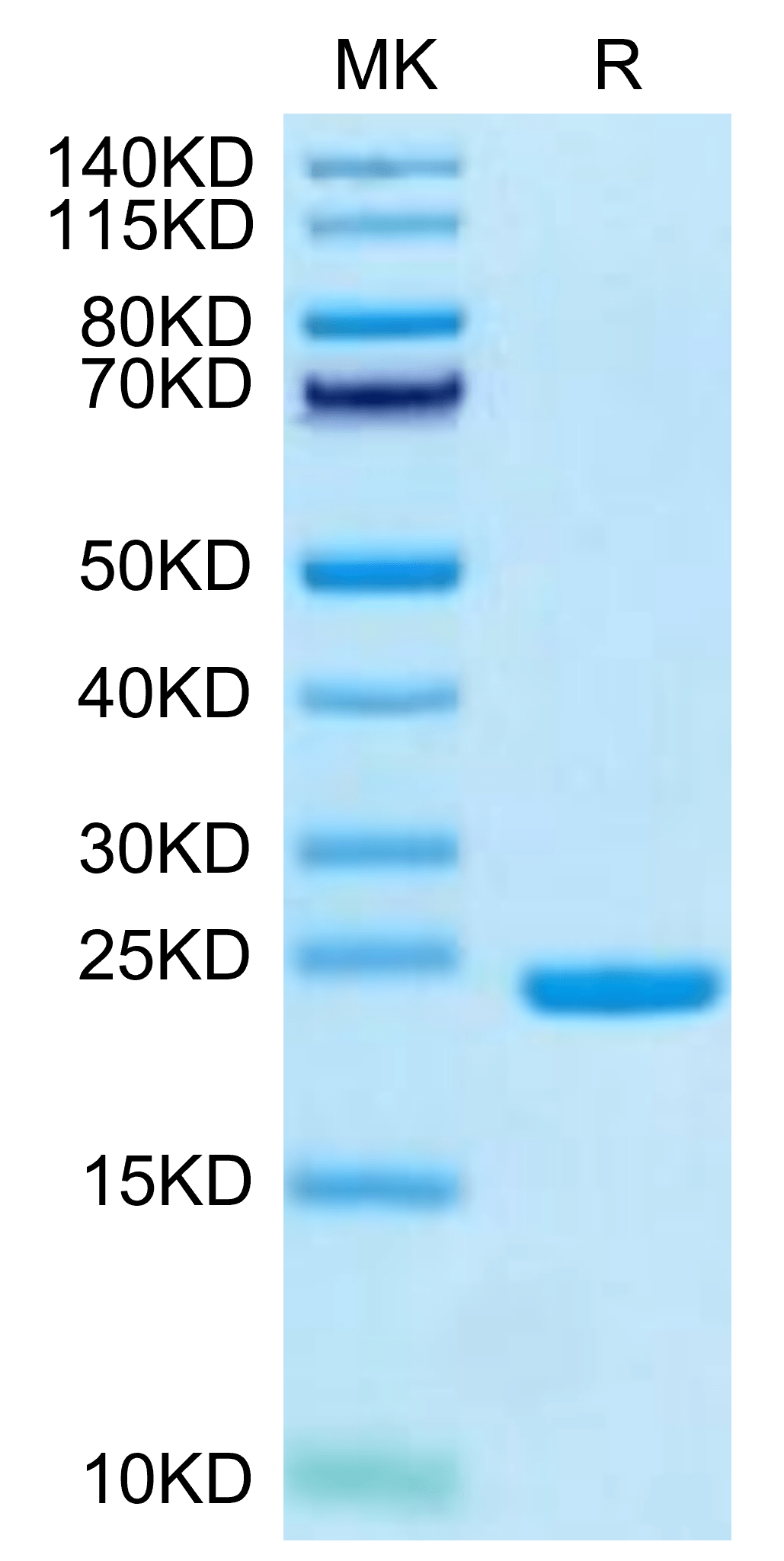| Weight | 1 lbs |
|---|---|
| Dimensions | 9 × 5 × 2 in |
| accession | NP_001240671 |
| express system | E.coli |
| product tag | N-His |
| purity | > 95% as determined by Tris-Bis PAGE;> 95% as determined by HPLC |
| background | Keratin 19 (K19) belongs to the keratin family of proteins, which maintains structural integrity of epithelia. In cancer, K19 is highly expressed in several types where it serves as a diagnostic marker. |
| molecular weight | The protein has a predicted MW of 21.84 kDa same as Tris-Bis PAGE result. |
| available size | 100 µg, 500 µg |
| endotoxin | Less than 1EU per μg by the LAL method. |
Canine keratin, type I cytoskeletal 19 (310-399) Protein 3100
$240.00 – $800.00
Summary
- Expression: E.coli
- Pure: Yes (HPLC)
- Amino Acid Range: Gln310-Leu399
Canine keratin, type I cytoskeletal 19 (310-399) Protein 3100
| protein |
|---|
| Size and concentration 100, 500µg and lyophilized |
| Form Lyophilized |
| Storage Instructions Valid for 12 months from date of receipt when stored at -80°C. Recommend to aliquot the protein into smaller quantities for optimal storage. Please minimize freeze-thaw cycles. |
| Storage buffer Shipped at ambient temperature. |
| Purity > 95% as determined by Tris-Bis PAGE |
| target relevance |
|---|
| Keratin 19 (K19) belongs to the keratin family of proteins, which maintains structural integrity of epithelia. In cancer, K19 is highly expressed in several types where it serves as a diagnostic marker. |
| Protein names Keratin, type I cytoskeletal 19 (Cytokeratin-19) (CK-19) (Keratin-19) (K19) |
| Protein family Intermediate filament family |
| Mass 44106Da |
| Function Involved in the organization of myofibers. Together with KRT8, helps to link the contractile apparatus to dystrophin at the costameres of striated muscle. {ECO:0000269|PubMed:16000376}. |
| Tissues Expressed in a defined zone of basal keratinocytes in the deep outer root sheath of hair follicles. Also observed in sweat gland and mammary gland ductal and secretory cells, bile ducts, gastrointestinal tract, bladder urothelium, oral epithelia, esophagus, ectocervical epithelium (at protein level). Expressed in epidermal basal cells, in nipple epidermis and a defined region of the hair follicle. Also seen in a subset of vascular wall cells in both the veins and artery of human umbilical cord, and in umbilical cord vascular smooth muscle. Observed in muscle fibers accumulating in the costameres of myoplasm at the sarcolemma in structures that contain dystrophin and spectrin. {ECO:0000269|PubMed:16000376, ECO:0000269|PubMed:2468493, ECO:0000269|PubMed:2469734}. |
| Structure Heterotetramer of two type I and two type II keratins. Interacts with PNN and the actin-binding domain of DMD. Interacts with HCV core protein. {ECO:0000269|PubMed:10809736, ECO:0000269|PubMed:16000376}.; (Microbial infection) Interacts with hepatitis C virus/HCV core protein. {ECO:0000269|PubMed:15846844}. |
| Domain This keratin differs from all other IF proteins in lacking the C-terminal tail domain. |
| Target Relevance information above includes information from UniProt accession: P08727 |
| The UniProt Consortium |
Data
Publications
Publications
| pmid | title | authors | citation |
|---|---|---|---|
| We haven't added any publications to our database yet. | |||
Protocols
| relevant to this product |
|---|
Documents
| # | ||
|---|---|---|
| Please enter your product and batch number here to retrieve product datasheet, SDS, and QC information. | ||
















